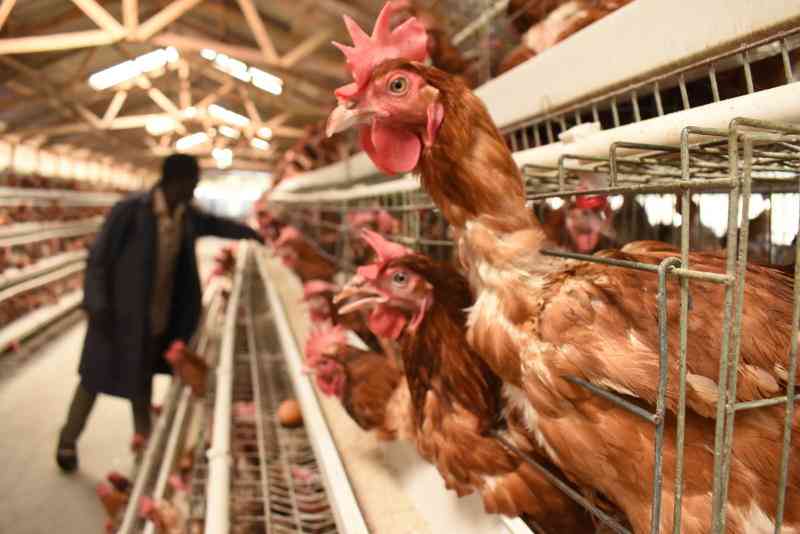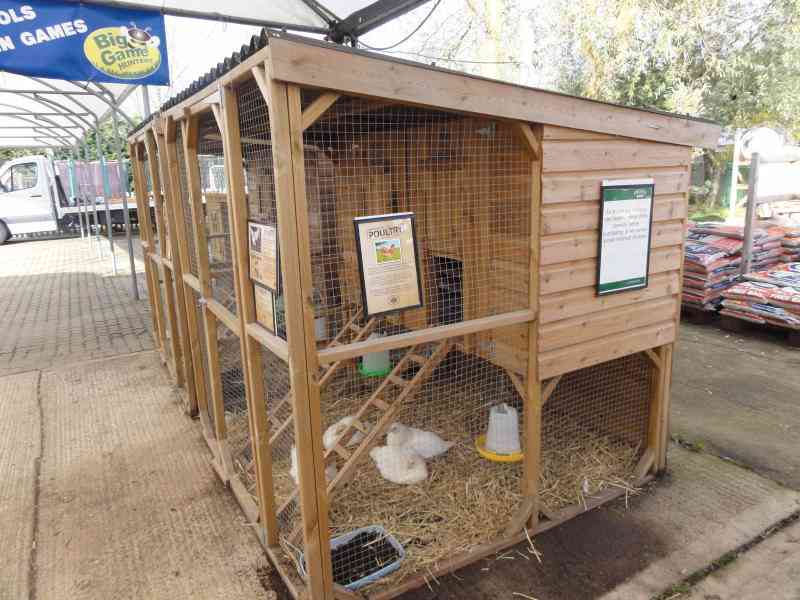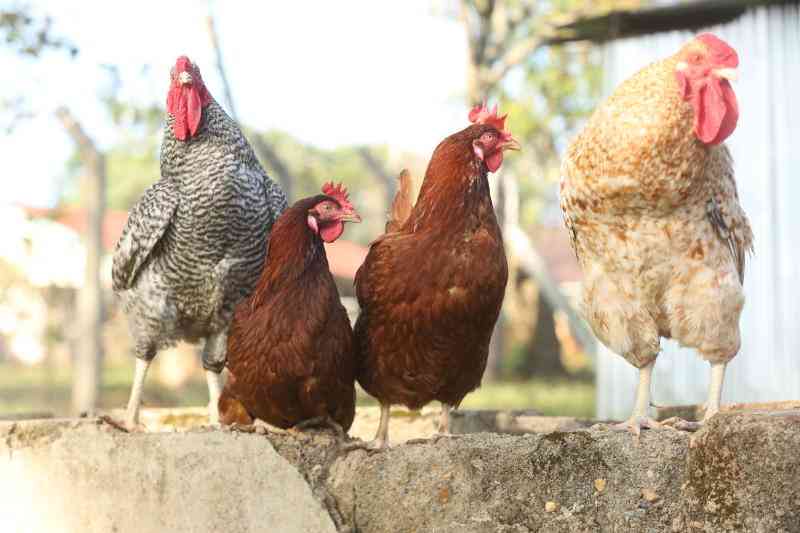On February 21 last year, we run a piece headlined ‘Forget quails, there’s a new bird in town!’ Following the publication, there was a floodgate of inquiries from young farmers eager to learn more about it.
Farmers wanted to know where they can get eggs, what it entails to breed the birds, if demand was real and so on.
The emails have not stopped coming. At least every month there is a farmer asking about these exotic birds. What is this hulla ballo about exotic birds? So this week I will explore exotic birds in detail.
I love exotic birds; the guinea fowl’s posture, graceful walking style and plumage are a good on-farm distraction from the traditional chicken. In some farms these exotic birds pass for pets; but you can get more from them apart from that rare beauty they crown to your farm.
Do research
In summary exotic birds are as good as a break from the norm. Nonetheless it is not just a departure from the tradition that ticks about these birds but they also come with a good measure of relatively handsome sometimes exaggerated monetary value; which I suppose is due to their scarcity against a huge demand and a lot of myths about their potential – remember the quail hullabaloo.
Back in younger days in my communication class the late Dr Peter Oriare stressed this point that prevalence of myths is but a direct manifestation of deficiency in information. This is the reason I emphasise that as a farmer before you enter this bandwagon of novel ventures in exotic or tamed birds, take some time and seek more information.
Most of these birds are either not native in Africa or have been tamed from the wild and domesticated by man. I will talk about the common exotic birds in Kenya and their various aspects.
Guinea fowl
Did you know that guinea fowls offer security in addition to having tasty meat and being a good source of income?
Grown up guinea fowls are watchdogs that will ensure no stranger sets foot onto your farm in your absence; if they cannot chase them away they will sound the alarm or put on a show filled with fear appeals.
What they eat
Guinea fowls love to eat insects and can offer a helping hand in tick control on your farm by removing ticks from livestock or picking them on the ground.
They also eat beetles, ants, grasshoppers and crickets. Guinea fowls are not only feared by snakes but they can kill them plus their vocalisation keeps rodents at bay.
So delicious is their meat that in medieval times they were eaten only by the wealthy; their meat is low in cholesterol and leaner than chicken’s.
Stay informed. Subscribe to our newsletter
Guinea fowls are easy to keep and can feed on what chicken can eat; but love to forage a lot and should thus be given enough space in grass fields to do so. They are relatively easy to keep under free range and at night they will do with a simple but secure house with enough perches.
Male and female guinea nearly look alike but the wattle of females is usually smaller. Keets (baby guinea fowls) are easy to rear and with good warmth during their initial stages in life, a large percentage will make it to adulthood.
Generally, guinea fowls are beautiful and their presence on the farm adds to its beauty.
Peafowls or peacocks
They are known for their blue, red, gold tail which the male spread out during courtship.
During the courtship the male with the most colourful and biggest tail spread wins and mates with the lady bird. Unlike in human beings, it is the male that attracts the female; the female are thus not as beautiful.
Although in daily language the term peacock includes both males and females technically speaking only the male are called peacock; the female are called peahens. The corrective collective term for both sexes is peafowl.
Peahens are poor layers and will do with an average five eggs per lay. Peafowls love to roam and require a large area but are also prone to predator attacks. Blackhead disease is a great health challenge especially when they are mixed with chicken.
Turkey
Some people will keep a Tom Turkey (mature male turkey) as a pet; but turkey has a lot of delicious meat which can comfortably fit in a family party. Be warned that male turkeys can sometimes be aggressive to human beings and can fatally harm babies.
Poults (baby turkeys) require a keen observation during their initial days of life. Poults unlike chicks require special treatment in their initial weeks of life.
Up to around two weeks turkeylings have poor eyesight which greatly lowers their feeding ability. Many farmers will not notice this as poults absorb yolk which enables them to survive for up to six days without food or water; however inasmuch as they can survive during this time if not fed death may occur.
During this time temperature regulation is of critical importance as they are yet to grow feathers to be able to keep warm by themselves an artificial source of warmth is thus a necessity at this time.
Cold causes a lot of stress to the poults and predisposes them to other diseases.
Most Kenyan farmers lose their turkeylings at this stage especially those under free range system where the hen is released into the morning cold and dew with her poults. Other sources of stress at this age are overcrowding and poor ventilation.
Ostrich
This is the largest and heaviest bird in the world and can grow to about 2.5 metres tall and weigh up to 140kg at maturity.
The ostrich holds another title of being the land animal with the biggest eye and it is the only bird with two toes per foot. Their eggs and babies also hold the record as the largest among birds.
Like man ostriches are omnivores but with a bias towards seeds and vegetation. Ostriches will feed on roots, insects, rodents and lizards. While they can get all their water from vegetation they won’t mind a drink should they come across a pool of water.
Males have a black and white plumage which they flap during courtship to attract the female. Their love is not short lived but will continue until the eggs are hatched and they will take care of the young ones together- in family. From birth; domesticated ostriches take about two to three years to mature.
Ostrich is among the most profitable agricultural enterprise due to a multiplicity of products. Ostrich meat is high in protein but low in fats and cholesterol and therefore healthier than other meats. The demand for ostrich meat is high throughout the year in high end hotels.
Easy to keep
Ostrich feathers are used in decorating houses and for cleaning. Ostrich skin has a high market and aesthetic value due to its thickness, softness and durability. It is used in the manufacture of bags, shoes and jackets.
Geese
Goose is one and geese are many. Geese are easy to keep and will do with any small well ventilated building for the night.
Geese are quite hardy and not susceptible to many common poultry diseases. Geese like to forage and goslings will start feeding on grass as early as one week of age. At about one month forage will be their staple feed although grain supplementation is good for the birds’ nutritional requirements. Don’t keep more than 40 birds on one acre of green grass.
Goslings (young geese) shouldn’t be exposed to cold stress they should preferably be raised in a brooder and can be fed on pelted chick starter mash. Do note that feeds containing coccidiostats can cause lameness or even death in goslings.
One gander (male geese) will mate satisfactorily with five females. It is difficult to tell the sex of geese except by way of examination of the reproductive organs.
This is done by lifting the goose by the neck and lay it on its back on a table, with the tail pointed away from you. Move the tail end of the bird out over the edge so it can be readily bent downwards.
Then insert your lubricated (with Vaseline) pointer finger into the cloaca about half an inch and move it around in a circular manner several times to enlarge and relax the sphincter muscle which closes the opening.
Next, apply some pressure below but on the sides of the vent to externalise the sex organs. In some birds the male organ is somewhat difficult to unsheath.
An inexperienced sexer may easily call a bird a female if, after slight pressure, the cork-screw-like male organ is not exposed. However, only the presence of a female genital eminence will positively identify a female.
-The writer is a veterinary Surgeon working as the Communication Officer at the Kenya Tsetse and Trypanosomiasis Eradication Council – KENTTEC
 The Standard Group Plc is a
multi-media organization with investments in media platforms spanning newspaper
print operations, television, radio broadcasting, digital and online services. The
Standard Group is recognized as a leading multi-media house in Kenya with a key
influence in matters of national and international interest.
The Standard Group Plc is a
multi-media organization with investments in media platforms spanning newspaper
print operations, television, radio broadcasting, digital and online services. The
Standard Group is recognized as a leading multi-media house in Kenya with a key
influence in matters of national and international interest.
 The Standard Group Plc is a
multi-media organization with investments in media platforms spanning newspaper
print operations, television, radio broadcasting, digital and online services. The
Standard Group is recognized as a leading multi-media house in Kenya with a key
influence in matters of national and international interest.
The Standard Group Plc is a
multi-media organization with investments in media platforms spanning newspaper
print operations, television, radio broadcasting, digital and online services. The
Standard Group is recognized as a leading multi-media house in Kenya with a key
influence in matters of national and international interest.








